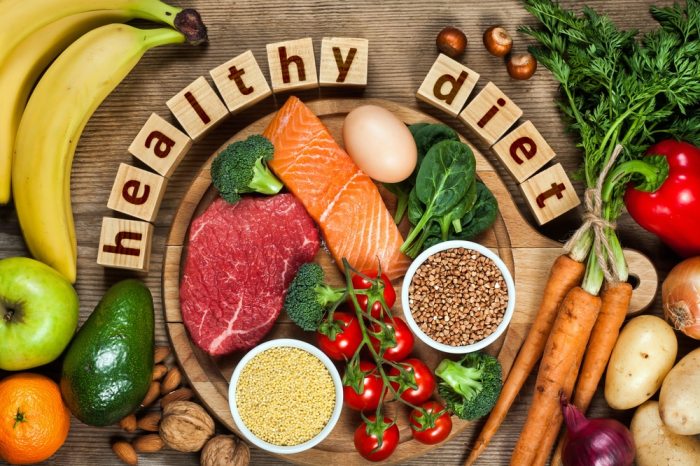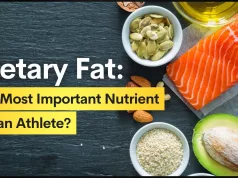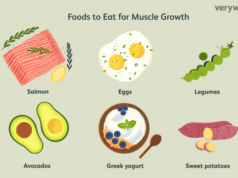What is good diet – What is a good diet? It’s a question that resonates with many of us, seeking to understand the principles of nourishing our bodies for optimal health and well-being. A good diet is not a rigid set of rules, but rather a balanced approach to consuming the nutrients we need to thrive. It’s about making informed food choices that support our physical and mental health, providing the energy to navigate our daily lives and contribute to a fulfilling existence.
The journey to understanding what constitutes a good diet involves exploring various aspects of nutrition, including the fundamental principles of a healthy diet, the roles of macronutrients and micronutrients, and the importance of balanced nutrition. We will delve into dietary guidelines, compare different dietary approaches, and provide a framework for making informed food choices. Additionally, we’ll discuss the role of hydration, the significance of individualized diet plans, and the importance of cultivating healthy eating habits. Finally, we’ll address common myths and misconceptions surrounding diet and nutrition, providing evidence-based information to empower you to make informed choices about your well-being.
Dietary Guidelines
The Dietary Guidelines for Americans (DGA) are a set of science-based recommendations designed to promote health and reduce the risk of chronic diseases. They are updated every five years by the U.S. Department of Agriculture (USDA) and the U.S. Department of Health and Human Services (HHS).
Dietary Guidelines for Americans
The DGA provides recommendations for healthy eating patterns that emphasize:
- Focus on variety, nutrient density, and amount. Choose a variety of foods from all food groups and prioritize nutrient-rich options. Pay attention to portion sizes to ensure you are consuming the appropriate amount of calories and nutrients.
- Limit added sugars, saturated fats, and sodium. These components can contribute to weight gain, heart disease, and other health problems. Opt for naturally occurring sugars in fruits and vegetables instead of added sugars.
- Choose nutrient-rich foods. Focus on foods that provide essential vitamins, minerals, and fiber. This includes fruits, vegetables, whole grains, lean protein sources, and low-fat dairy products.
- Stay within calorie limits. The number of calories you need depends on your age, sex, activity level, and other factors. Consult with a healthcare professional or registered dietitian to determine your individual calorie needs.
- Choose healthy beverage options. Limit sugary drinks and choose water, unsweetened tea, or low-fat milk instead.
Comparison of Dietary Approaches
Different dietary approaches have their unique benefits and drawbacks. Here’s a comparison of popular options:
| Dietary Approach | Key Features | Benefits | Drawbacks |
|---|---|---|---|
| Mediterranean Diet | Emphasizes fruits, vegetables, whole grains, legumes, olive oil, nuts, and fish. Includes moderate amounts of poultry and dairy. Limits red meat and processed foods. | Reduces risk of heart disease, stroke, type 2 diabetes, and some cancers. Promotes healthy aging. | May require significant lifestyle changes. Can be expensive to follow. |
| DASH Diet | Focuses on fruits, vegetables, whole grains, low-fat dairy, and lean protein. Limits saturated fat, cholesterol, and sodium. | Reduces blood pressure and improves heart health. | May require significant dietary changes. Can be challenging to maintain long-term. |
| Vegetarian Diets | Exclude all or some animal products, including meat, poultry, fish, eggs, and dairy. | Lower risk of heart disease, type 2 diabetes, and some cancers. Promotes sustainability and animal welfare. | Can be challenging to ensure adequate intake of certain nutrients, such as protein, iron, and vitamin B12. Requires careful planning. |
Sample Meal Plan
Here’s a sample meal plan that aligns with a good diet:
Breakfast
- Oatmeal with berries and nuts
- Greek yogurt with fruit and granola
- Whole-wheat toast with avocado and egg
Lunch
- Salad with grilled chicken or fish and a whole-wheat roll
- Lentil soup with a side of whole-grain bread
- Veggie burger on a whole-wheat bun with a side of sweet potato fries
Dinner
- Baked salmon with roasted vegetables
- Chicken stir-fry with brown rice
- Black bean chili with cornbread
Snacks
- Fruits
- Vegetables
- Nuts and seeds
- Plain yogurt
Recommended Daily Intake
| Food Group | Recommended Daily Intake |
|---|---|
| Fruits | 2 cups |
| Vegetables | 2.5 cups |
| Grains | 6 ounces |
| Protein Foods | 5.5 ounces |
| Dairy | 3 cups |
| Oils | 6 teaspoons |
Food Choices for a Good Diet
A good diet is about more than just avoiding certain foods; it’s about prioritizing nutrient-rich options that fuel your body and support your overall health. Understanding the key food groups and making informed choices within each group is essential for building a healthy eating pattern.
Prioritizing Key Food Groups
A balanced diet emphasizes a variety of foods from all food groups. These groups are essential for providing your body with the nutrients it needs to function optimally.
- Fruits: Fruits are rich in vitamins, minerals, fiber, and antioxidants, which can protect your cells from damage. Examples include apples, bananas, berries, citrus fruits, grapes, melons, and pears.
- Vegetables: Vegetables are packed with vitamins, minerals, and fiber, and they are low in calories. Examples include broccoli, carrots, leafy greens, peppers, spinach, sweet potatoes, and tomatoes.
- Grains: Whole grains provide fiber, vitamins, and minerals. Prioritize whole grains over refined grains, which have been stripped of their nutrients. Examples include brown rice, quinoa, oats, and whole-wheat bread.
- Protein: Protein is essential for building and repairing tissues, producing enzymes and hormones, and supporting immune function. Examples include beans, lentils, nuts, seeds, poultry, fish, and lean meats.
- Dairy: Dairy products provide calcium, vitamin D, and protein. Choose low-fat or fat-free options for a healthier choice. Examples include milk, yogurt, and cheese.
Choosing Whole, Unprocessed Foods
Processed foods are often high in unhealthy fats, added sugars, and sodium, and they can be low in nutrients. Prioritizing whole, unprocessed foods is a key component of a good diet.
“Processed foods are often high in unhealthy fats, added sugars, and sodium, and they can be low in nutrients. Prioritizing whole, unprocessed foods is a key component of a good diet.”
Benefits of Fruits, Vegetables, and Whole Grains
Fruits, vegetables, and whole grains are nutrient-dense foods that provide numerous health benefits.
- Fruits and vegetables are low in calories and rich in vitamins, minerals, fiber, and antioxidants, which can help protect against chronic diseases such as heart disease, stroke, type 2 diabetes, and some types of cancer.
- Whole grains provide fiber, which helps regulate blood sugar levels, promotes digestive health, and can lower cholesterol levels. They also contain essential vitamins and minerals.
Hydration and Good Diet
Water is essential for life, playing a crucial role in various bodily functions. It helps regulate body temperature, transports nutrients and oxygen to cells, removes waste products, and lubricates joints. Staying hydrated is vital for maintaining a healthy body and supporting overall well-being.
Recommended Daily Water Intake
The recommended daily water intake varies depending on factors such as age, gender, activity level, climate, and overall health. However, a general guideline is to drink approximately 8 glasses of water per day.
- Adults: The Institute of Medicine recommends an average daily fluid intake of about 15.5 cups (3.7 liters) for men and 11.5 cups (2.7 liters) for women.
- Children: Water needs vary depending on age and activity level. For instance, children aged 4-8 years old need around 5 cups of fluid daily, while children aged 9-13 need around 8 cups.
- Athletes: Athletes need to drink more water than sedentary individuals to replenish fluids lost through sweat. The amount of water required depends on the intensity and duration of exercise.
- Pregnant and Breastfeeding Women: Pregnant women need to increase their fluid intake to support the growth of the fetus and to produce breast milk. The recommended intake is about 10 cups (2.4 liters) per day.
Tips for Staying Hydrated
Staying hydrated throughout the day is essential for maintaining good health. Here are some tips to help you achieve adequate hydration:
- Carry a water bottle: Keep a reusable water bottle with you at all times and refill it throughout the day. This makes it easy to stay hydrated on the go.
- Drink water before, during, and after exercise: Exercise can lead to significant fluid loss, so it’s crucial to replenish fluids before, during, and after workouts.
- Eat fruits and vegetables rich in water: Many fruits and vegetables, such as watermelon, cucumber, and spinach, are high in water content. Including these in your diet can contribute to your overall hydration.
- Avoid sugary drinks: Sugary drinks, such as soda and fruit juices, can actually dehydrate you. Stick to water, unsweetened tea, or low-sugar options.
- Listen to your body: Pay attention to your thirst cues. When you feel thirsty, it means your body is already slightly dehydrated. Drink water before you feel thirsty.
Beverage Impact on Hydration
Different beverages have varying impacts on hydration levels. Here’s a comparison of some common beverages:
| Beverage | Hydration Level | Impact |
|---|---|---|
| Water | Excellent | Provides essential fluids without added sugar or calories. |
| Unsweetened Tea | Good | Provides fluids and antioxidants. Choose unsweetened options to avoid added sugar. |
| Milk | Moderate | Provides fluids and nutrients, but can be high in calories. Choose low-fat or skim options. |
| Fruit Juice | Moderate | Provides fluids and vitamins, but can be high in sugar and calories. Choose 100% fruit juice in moderation. |
| Soda | Poor | Dehydrating due to its high sugar content. Avoid soda altogether. |
Individualized Diet Plans

A one-size-fits-all approach to diet doesn’t work for everyone. Your dietary needs are unique and influenced by various factors, so it’s crucial to create a personalized plan.
Factors Influencing Individual Dietary Needs
Several factors influence your individual dietary needs, including:
- Age: As you age, your body’s needs change. For example, older adults may require more calcium and vitamin D to support bone health.
- Activity Level: Active individuals require more calories and nutrients than those with sedentary lifestyles. Athletes, for example, need to consume more carbohydrates and protein to fuel their workouts and support muscle recovery.
- Health Conditions: Certain health conditions, such as diabetes, heart disease, and allergies, may require specific dietary modifications. A registered dietitian can provide guidance on managing these conditions through diet.
- Pregnancy and Lactation: Women who are pregnant or breastfeeding have increased nutritional needs to support their own health and the growth and development of their baby.
- Genetics: Your genetic makeup can influence your susceptibility to certain health conditions and your body’s ability to process certain nutrients.
Importance of Consulting a Registered Dietitian
A registered dietitian (RD) is a qualified healthcare professional who can provide personalized dietary advice based on your individual needs and goals.
A good diet is all about balance and moderation, ensuring you get the right nutrients to fuel your body. While exercise plays a vital role in weight management, you might wonder if is running the best way to lose weight.
Ultimately, a healthy lifestyle combines a balanced diet with enjoyable physical activity, like running, to achieve your goals.
- Comprehensive Assessment: RDs conduct a thorough assessment of your health history, dietary habits, and lifestyle to create a plan tailored to you.
- Evidence-Based Recommendations: RDs base their recommendations on the latest scientific evidence and research.
- Individualized Approach: RDs work with you to develop a plan that fits your preferences, lifestyle, and cultural background.
- Support and Accountability: RDs provide ongoing support and guidance to help you stay on track and make sustainable changes to your diet.
Resources for Nutrition Information, What is good diet
Reliable sources of nutrition information can help you make informed decisions about your diet.
- Academy of Nutrition and Dietetics (AND): The AND is a professional organization for registered dietitians that provides evidence-based information on nutrition and healthy eating.
- National Institutes of Health (NIH): The NIH is a government agency that conducts and supports medical research, including nutrition research.
- Centers for Disease Control and Prevention (CDC): The CDC provides public health information and resources, including guidelines on nutrition and healthy eating.
- Trusted Health Professionals: Consult with your doctor, registered dietitian, or other healthcare providers for personalized advice.
Creating an Individualized Diet Plan
Creating an individualized diet plan involves several steps.
A good diet is all about balance and variety, ensuring you get the nutrients your body needs. A key aspect is having healthy and satisfying lunch options. For some great ideas on how to make your diet lunch both nutritious and delicious, check out ideas for diet lunch.
Remember, a good diet is not about deprivation but about fueling your body for optimal health and energy.

This flowchart illustrates the steps involved in creating a personalized diet plan.
A good diet is about more than just weight management; it’s about providing your body with the nutrients it needs to thrive. One aspect of a healthy diet is keeping triglycerides in check, which are fats found in your blood.
If you’re looking for ways to lower your triglyceride levels, you can find helpful information on how to lower triglycerides with diet. Ultimately, a good diet is a balanced one that considers your individual needs and goals.
Healthy Eating Habits
Adopting healthy eating habits is crucial for overall well-being. It involves making conscious choices about the foods we consume and how we eat them. By incorporating these practices into our daily routines, we can improve our physical health, mental clarity, and energy levels.
Mindful Eating
Mindful eating is a practice that encourages us to pay attention to our hunger cues and savor each bite. It involves eating slowly, chewing thoroughly, and being present during meals. This practice helps us to recognize when we are truly hungry and full, preventing overeating and promoting a healthy relationship with food.
Portion Control
Portion control plays a vital role in maintaining a healthy weight. It involves being mindful of the amount of food we consume at each meal and snack. By using smaller plates, measuring out portions, and avoiding mindless snacking, we can regulate our calorie intake and prevent overconsumption.
Healthy Snack Options
Snacks can be a valuable part of a healthy diet, providing energy and nutrients between meals. It’s essential to choose snacks that are nutritious and satisfying, rather than processed or sugary options. Here are some healthy snack options:
- Fruits: Apples, bananas, berries, oranges, pears
- Vegetables: Carrots, celery, cucumbers, bell peppers
- Nuts and seeds: Almonds, walnuts, pumpkin seeds, sunflower seeds
- Yogurt: Greek yogurt, plain yogurt with fruit or granola
- Hard-boiled eggs
- Trail mix: A combination of nuts, seeds, and dried fruit
Diet and Physical Activity
A good diet and regular physical activity are two pillars of a healthy lifestyle. They work together synergistically, meaning that the benefits of each are amplified when they are combined.
The Synergistic Relationship Between Diet and Exercise
A balanced diet provides your body with the nutrients it needs to function properly. Regular physical activity helps your body use those nutrients efficiently. For example, exercise can help your body burn calories, improve your cardiovascular health, and build muscle. A good diet can provide your body with the energy and nutrients it needs to fuel your workouts and recover properly.
How Physical Activity Enhances the Benefits of a Good Diet
Regular physical activity can enhance the benefits of a good diet in several ways:
- Weight Management: Exercise burns calories, which can help you maintain a healthy weight. A good diet can help you control your calorie intake and provide you with the nutrients you need to support your exercise routine.
- Improved Cardiovascular Health: Physical activity strengthens your heart and lungs, which can reduce your risk of heart disease, stroke, and other cardiovascular problems. A good diet can help lower your blood pressure and cholesterol levels, which are important factors in cardiovascular health.
- Stronger Bones and Muscles: Weight-bearing exercise, such as walking, running, and weightlifting, can help build strong bones and muscles. A good diet can provide your body with the calcium and other nutrients it needs to support bone health.
- Reduced Risk of Chronic Diseases: Regular physical activity and a good diet can help reduce your risk of developing chronic diseases such as type 2 diabetes, some types of cancer, and heart disease.
- Improved Mental Health: Exercise can help reduce stress, improve mood, and boost self-esteem. A good diet can also contribute to your mental well-being by providing your body with the nutrients it needs to function properly.
Examples of Physical Activities
There are many different types of physical activities that you can incorporate into your daily routine. Here are a few examples:
- Walking: Walking is a great low-impact exercise that can be done anywhere. Aim for at least 30 minutes of brisk walking most days of the week.
- Running: Running is a more intense form of exercise that can help you burn more calories. Start slowly and gradually increase your distance and intensity.
- Swimming: Swimming is a great full-body workout that is easy on your joints.
- Cycling: Cycling is a fun and effective way to get exercise. You can cycle outdoors or use a stationary bike at the gym.
- Strength Training: Strength training helps build muscle mass and increase your metabolism. You can use weights, resistance bands, or your own body weight for strength training exercises.
- Yoga: Yoga is a great way to improve flexibility, strength, and balance.
- Dancing: Dancing is a fun and energetic way to get exercise.
Benefits of Combining a Good Diet with Regular Exercise
| Benefit | Good Diet | Regular Exercise | Combined Benefits |
|---|---|---|---|
| Weight Management | Provides nutrients and helps control calorie intake. | Burns calories and increases metabolism. | Promotes healthy weight loss or maintenance, reducing the risk of obesity-related diseases. |
| Cardiovascular Health | Lowers blood pressure and cholesterol levels. | Strengthens the heart and lungs, improves blood flow. | Reduces the risk of heart disease, stroke, and other cardiovascular problems. |
| Bone Health | Provides calcium and other nutrients for bone health. | Weight-bearing exercise strengthens bones. | Reduces the risk of osteoporosis and fractures. |
| Muscle Health | Provides protein for muscle growth and repair. | Strength training builds muscle mass. | Increases muscle strength and endurance, improves overall fitness. |
| Mental Health | Provides nutrients for brain function and mood regulation. | Reduces stress, improves mood, and boosts self-esteem. | Promotes overall mental well-being, reducing the risk of depression and anxiety. |
| Disease Prevention | Reduces the risk of chronic diseases like diabetes, heart disease, and some cancers. | Boosts the immune system, improves insulin sensitivity, and reduces inflammation. | Significantly lowers the risk of developing chronic diseases and improves overall health. |
Myths and Misconceptions: What Is Good Diet
The world of nutrition is often filled with misinformation and contradictory advice. It’s crucial to separate fact from fiction and rely on credible sources for information about diet and health. Understanding common myths and misconceptions can help you make informed choices about your diet.
Common Dietary Myths
- Fat-free is always healthy: While reducing saturated and trans fats is important, eliminating all fat from your diet can be detrimental. Healthy fats, such as those found in avocados, nuts, and olive oil, are essential for various bodily functions, including hormone production and cell growth.
- Skipping meals helps you lose weight: Skipping meals can lead to overeating later, as your body goes into starvation mode and slows down your metabolism. It can also result in nutrient deficiencies and low energy levels.
- Carbs are the enemy: Carbohydrates are an essential source of energy for the body. Choosing complex carbohydrates, like those found in whole grains, fruits, and vegetables, is crucial for maintaining a healthy diet.
- All calories are created equal: The source of calories matters. Calories from nutrient-rich foods, like fruits, vegetables, and whole grains, provide more nutritional value than those from processed foods, sugary drinks, and unhealthy fats.
- You need to eat 6 meals a day to boost metabolism: There’s no scientific evidence to support this claim. Eating frequent small meals may not necessarily increase your metabolism. Focus on consuming balanced meals and snacks throughout the day to maintain stable blood sugar levels.
Popular Diet Trends
- The Ketogenic Diet: This high-fat, low-carbohydrate diet forces the body to burn fat for energy instead of glucose. While it may lead to initial weight loss, it can be difficult to sustain long-term and may have adverse effects, including nutrient deficiencies and digestive issues.
- Intermittent Fasting: This approach involves cycling between periods of eating and fasting. While some studies suggest potential benefits for weight loss and metabolic health, it’s not suitable for everyone, especially those with certain health conditions.
- The Paleo Diet: This diet emphasizes consuming foods that were likely eaten by our prehistoric ancestors, such as meat, fish, fruits, and vegetables. It eliminates processed foods, grains, and dairy. While it may promote healthy eating habits, it can be restrictive and may lead to nutrient deficiencies.
Importance of Credible Sources
- Consult Registered Dietitians: Registered dietitians are qualified professionals who can provide personalized nutrition advice based on your individual needs and goals.
- Reputable Scientific Journals: Peer-reviewed scientific journals publish research articles that have undergone rigorous scrutiny by experts in the field.
- Government Health Agencies: Government health agencies, such as the National Institutes of Health (NIH) and the Centers for Disease Control and Prevention (CDC), provide reliable information on diet and nutrition.
Closing Summary
In conclusion, a good diet is not a one-size-fits-all concept. It’s a personalized approach that considers individual needs, preferences, and lifestyle factors. By understanding the principles of healthy eating, exploring different dietary approaches, and making informed food choices, we can nourish our bodies and enhance our overall well-being. Remember, the key to a good diet is to find a sustainable approach that fits your unique needs and preferences, allowing you to enjoy the journey to a healthier you.
Question & Answer Hub
What are the benefits of a good diet?
A good diet offers numerous benefits, including reduced risk of chronic diseases, improved energy levels, better mental health, and a stronger immune system.
How can I make sure I’m getting enough nutrients?
Focus on consuming a variety of foods from all food groups, prioritize whole, unprocessed options, and consider consulting a registered dietitian for personalized guidance.
Are there any foods I should avoid?
While there are no foods that are inherently “bad,” limiting processed foods, sugary drinks, and excessive amounts of saturated and unhealthy fats is generally recommended.
What are some easy ways to incorporate healthy eating habits?
Start by making small changes, like swapping sugary drinks for water, adding more fruits and vegetables to your meals, and choosing whole grains over refined grains.























